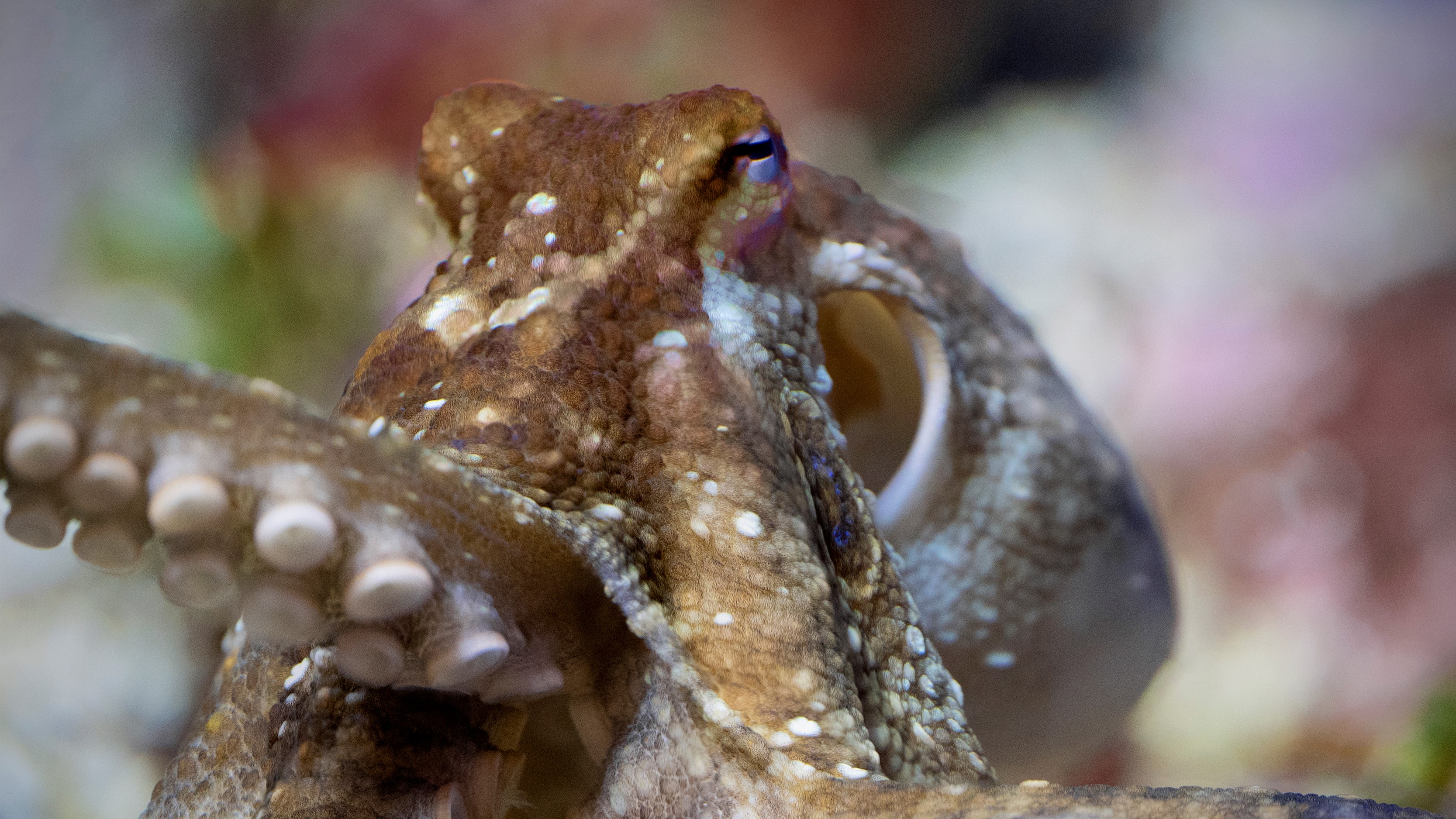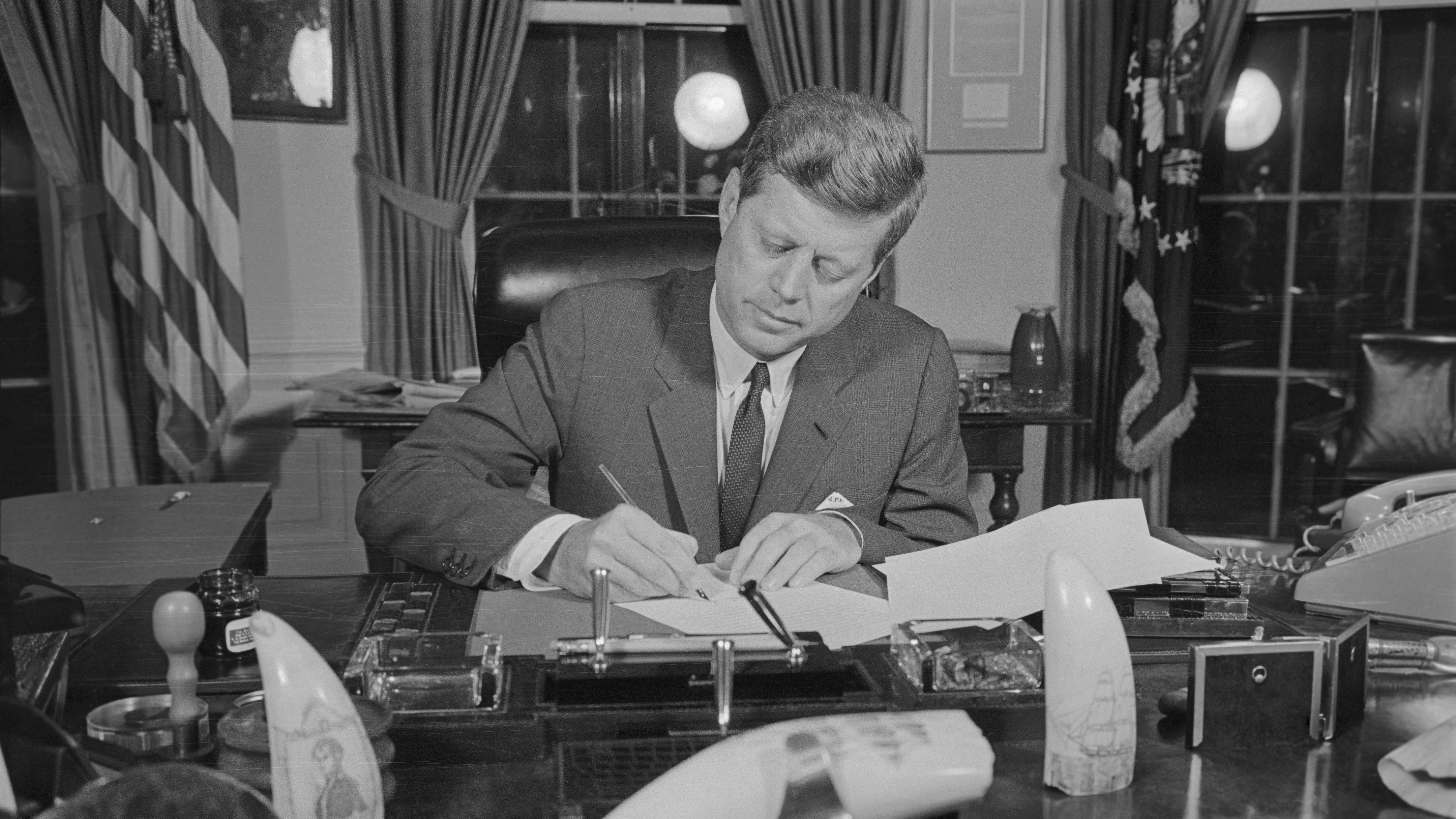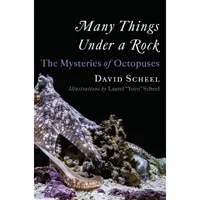How octopuses could have helped avert the Cuban missile crisis
As Cold War tensions rose, Gregory Bateson was busy observing solitary octopuses learning to live together in a single tank — and it gave him an idea about managing geopolitical relations.

In October 1962, the rules of engagement during the Cold War assumed particular urgency. Soviet nuclear warheads were in Cuba — and ships carrying missiles, launchers, and more warheads were on their way. The U.S. needed to establish new rules to communicate with and relate to the Soviet Union. Gregory Bateson, an interdisciplinary scholar, looked to his own studies with octopuses for insight into this problem.
Bateson understood that for birds and mammals, communication was rooted in parent-offspring bonds. In courtship feeding among many bird species, for example, the courted female begs like a young bird and allows the male to feed her. Bateson recognized that the feeding in this context is a signal, because feeding is not its only function. The behavior's additional function is courtship; that is, relationship building. Courtship feeding is a behavioral metaphor, an implicit comparison between one relationship (parental care) enacted as another (courtship).
In the context of the communications between nations, as related by Phillip Guddemi in his 2020 book Gregory Bateson on Relational Communication: From Octopuses to Nations, Bateson looked to another metaphor: that of closeness, physical proximity, which he observed in octopuses. Octopuses were interesting because females tend their eggs, but otherwise lack maternal care of offspring. Octopuses are also notoriously solitary. These facts drew Bateson's attention to their willingness to tolerate the proximity of neighbors as a metaphor for tolerant relationships among nations.
Surprisingly, however, and despite their solitary reputation, octopuses like closeness. Thursday was an octopus that my daughter Laurel and I kept in a home aquarium for a while. Thursday was eager to interact with Laurel. On coming home from school, Laurel would put her fingertips in the water, and Thursday would leave her den at the other end of the tank, scoot along the bottom, and then jet up to the surface for a hello. Even after feeding, she liked to hold on to Laurel, sometimes for as much as a half hour or more. When I chose a seat in the living room to read, Thursday would often quietly relocate in the tank to the point nearest me. She would crawl up and down the glass in my line of sight until I attended to her. By contrast, when Amethyst squirted me with water in the lab, she not only kept me at a distance but also metaphorically indicated her dislike.
Related: Watch an octopus waking up from what scientists think could have been a nightmare
The relational communications in octopuses are not rooted in parental care or mating dynamics. This insight allowed Bateson to wonder how the same mechanisms might serve in the relations of nations. Bateson studied juveniles of either (or both) Verill's two-spot octopus (Octopus bimaculatus) and the California two-spot octopus (Octopus bimaculoides) — he did not always distinguish which. Bateson collected his octopuses along the shores of La Jolla, California, where he at times found two octopuses under a single rock. His experiment similarly consisted of keeping two octopuses in a single tank. The solitary reputation of octopuses makes this a poor idea, and it is seldom done. Indeed, in some cases, one octopus would harass the other persistently, sometimes to death. However, if introduced at the same time, some pairs coexisted. These cases particularly interested Bateson.
Coexistence began with minor battles in which neither octopus was badly injured, a sort of testing phase. The larger octopus stole food from the smaller, and drove it out of shelter. After an interval, the smaller cautiously approached the larger —
a dangerous move — but the larger then retreated. As Bateson saw it, this sequence established trust. First, the stronger octopus demonstrated strength. The weaker then showed its vulnerability by approaching regardless. Finally, and critically, the stronger then held back and refrained from harming the vulnerable octopus, as though showing "I can hurt you but I will not." From this point, the two octopuses could coexist without fighting, and sat in close proximity, sometimes touching.
Get the world’s most fascinating discoveries delivered straight to your inbox.
Armed with these observations, in the final and most tense days of the Cuban missile crisis, Bateson then wrote a remarkable letter, seeking to bring to the attention of the Kennedy administration parallels between the international nuclear crisis and the behaviors of octopuses. The letter was to Bateson's colleague and mentor Warren McCulloch, who Bateson felt could direct the ideas to another colleague in the President’s Science Advisory Committee and thereby reach policy makers within the Kennedy administration.
The Cuban Missile Crisis was resolved within a few days of the letter being written, so there was little time to act on it and no evidence McCulloch ever did. In the near aftermath, however, Bateson remarked that Kennedy had placed "trust" in Khrushchev's judgment, as the quarantine might have given Khrushchev a cause to be offended, but one that the Soviet ruler could decline to act on. That is, Bateson felt that Kennedy's quarantine of Cuba had provoked the Soviets in just the way one octopus could provoke another. The quarantine blocked only weaponry, and fell short of an air strike on the missile sites, or a blockade of Cuba, either of which would have been an act of war. The quarantine provided Khrushchev aggravation not conciliation. Would Khrushchev break the quarantine and land the missiles in Cuba anyway? But six Soviet ships containing weapons stopped short or reversed course before meeting the quarantining U.S. forces. Khrushchev refrained. He subsequently agreed to remove the existing warheads from Cuba. An operational trust had been obtained allowing coexistence.
Bateson's observations were from captive octopuses interacting in pairs, and they described behaviors that remain rare or unheard of in octopuses, such as face-
to-face mating, backing mantle-first toward a rival, and embracing one another after making peace. Out of concern for their welfare, captive octopuses are so seldom housed together that few independent observations exist to expand on Bateson's account. Where we find octopuses together in the wild, they are busily interacting with one another in complex ways. While some of these interactions escalate into battles and can be fatal, most are mediated by relational communication such as signals and low-intensity aggression that fall short of all-out hostility.
Excerpted from Many Things Under a Rock: The Mysteries of Octopuses
The Mysteries of Octopus. Copyright (c) 2023 by David Scheel. Used with permission of the publisher, W. W. Norton & Company, Inc. All rights reserved.
Many Things Under a Rock: The Mysteries of Octopuses - $21.92 at Amazon
A behavioral ecologist’s riveting account of his decades-long obsession with octopuses: his discoveries, adventures, and new scientific understanding of their behaviors.

David Scheel is a field-oriented ecologist with experience in remote and wilderness settings in Africa and Alaska. He joined Alaska Pacific University in 2000 and teaches courses in marine biology, aquarium husbandry, and animal behavior.
David was educated in biology, animal behavior, and ecology; and trained in the field in places such as Yellowstone National Park, Serengeti NP in Tanzania, and many sites around Alaska. He lived with African lions and wild dogs for two years in the Serengeti, researching lion-hunting behavior. He began working with marine predators in 1993. In his marine research, he has worked with fisheries, marine birds and mammals, and marine invertebrates in Prince William Sound and the northern Gulf of Alaska. David specializes in the ecology and evolution of predator-prey relations and habitat use; and he has conducted theoretical, field, and laboratory studies in this area. His interests include the theory and philosophy of evolution, the evolution of consciousness, animal behavior, predator-prey ecology, ecology of social predators, and cephalopod biology.





